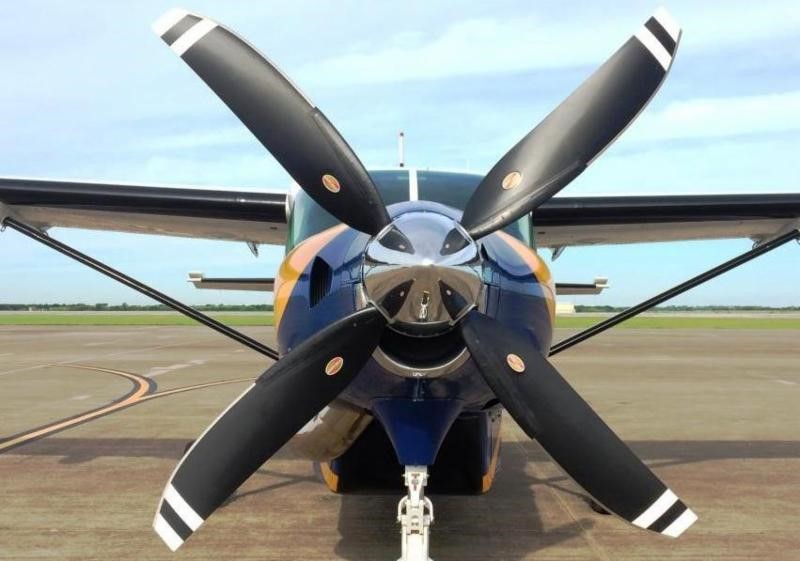
Your propeller represents a significant investment in the safety and efficiency of your airplane. That’s why it deserves a little extra TLC, especially in the winter when your airplane will be hangared for a few weeks or months.
Before you store your aircraft for the winter, take some time to perform these preventive maintenance tasks to ensure your prop looks and performs its best once springtime rolls around.
Inspect for damage – Start by looking for signs of damage like nicks, dings, and gouges from debris, cracks in the spinner dome, missing hardware, and corrosion. Then, use your bare hands to feel for any rough spots or sharp edges. If you have a composite propeller, you can use the “tap test” to check for delaminations and debonds in the blades. Simply tap the surface of the blades with a metal coin, listening for a dull, hollow sound that indicates a dead area in the bonding. For more information on proper propeller inspection techniques, check out our helpful video tutorials.
Keep it clean – Bugs, bird droppings, dirt, dust, and pollutants can cause serious damage to your propeller’s paint, exposing the metal or composite material underneath and making the blades more susceptible to corrosion. Before your airplane hibernates for the winter, give it a good wash, wax, and detail. Use a simple solution of dish soap and water to clean your propeller, taking care to wipe the blades in a downward position so that water doesn’t run up into the hub. Once your prop is clean and dry, consider using propeller covers to protect the blades from “hangar rash.”
Repair right away – If you spot any signs of damage or corrosion in your prop, don’t wait until the next flying season to address them. What seems like a minor issue now could turn into a much larger, more expensive, and potentially dangerous problem down the road. Take your prop to a reputable propeller repair station now, and you’ll save yourself headaches come springtime!
Check overhaul limits – Winter is also a good time to check if you are about to reach your manufacturer’s published Time Before Overhaul (TBO) limits, either in flight time or calendar time. If you have a Hartzell prop, refer to the most recent revision of Hartzell Service Letter HC-SL-61-61Y for details on your specific propeller model. Again, don’t wait to have any necessary repairs and overhaul services completed. Find a Hartzell Recommended Service Facility near you.
Consider an upgrade – More time on the ground this winter might have you dreaming of adding performance upgrades to your airplane. If a propeller upgrade is in your future, consider Hartzell’s Top Prop conversion program, which offers purpose-designed propellers for specific aircraft, including Beechcraft, Cessna, Piper, Mooney, Pilatus, Daher TBM, and more.
Our Top Prop customers report improvements in one or more areas, including shorter take-off distance, lower noise levels, better ground clearance, reduced tip erosion, increased climb rate and cruise speed, and smoother operations, not to mention better ramp appeal. And with Hartzell’s extended warranty on Top Prop propellers—the longest propeller warranty offered in the industry—your prop will be covered all the way through the first overhaul, helping to reduce downtime and lower your flying costs.
Preparing your airplane for winter storage is a great excuse to give your propeller some well-deserved attention. Put in the extra time and effort to maintain your prop, and you can protect the value of your propeller for years to come!
Have a question for the Hartzell Propeller technical team? Complete an online contact form, call 800-942-7767, or email techsupport@hartzellprop.com and we’ll get back to you as soon as possible.